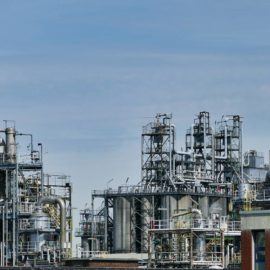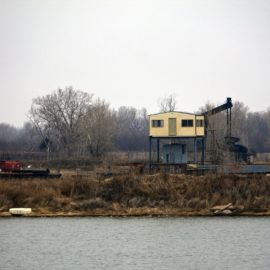
Dixie is not one of the favored songs today but the first line shows what happens when a drought in Texas and rain in Louisiana can make a state a cotton state.
A punishing drought in Texas could be a boon for cotton farmers in Louisiana and Mississippi, helping fuel a rebound in the fluffy fiber after historic lows in the previous two years. The dry spell affecting much of the West has wiped out hundreds of thousands of acres of cotton in Texas, by far the nation’s biggest producer. Cotton is a very thirsty crop; federal agriculture officials recently downgraded the expected yield as more and more farmers are being forced to abandon their fields due to the dry conditions. The misfortune of some Texas farmers could boost profits for others in the Deep South. While some farmers dropped cotton from their fields in 2020 and 2021 due to low prices, many have returned to take advantage of prices that were rebounding even before the drought took its toll. “For us it was market-driven,” said Marshall Hardwick, who farms about 8,000 total acres in Tensas Parish with his brother and father. The Hardwicks upped their cotton acreage from about 1,500 acres last year to 2,400 this year, replacing corn, he said.
nola.com
Cotton uses less nitrogen, which helps the Mississippi, and prices are up. Farmers are going for it.
In addition to its recovering price, cotton has the benefit of requiring less nitrogen fertilizer, which has been trading at historically high prices, Hardwick, a fourth-generation farmer, noted. Other farmers have also gotten back in to the cotton game. Will Ratcliff, who farms about 3,500 acres near St. Joseph, the Tensas Parish seat, had dropped cotton as a crop for the last two years. But this year, he’s going back in full-bore, with 1,100 acres planted. The price of cotton — about $1.10 per pound when he decided to get back in — was the main driver, he said. “Dollar cotton generally works,” he said. In 2020, the price of cotton fell below 60 cents per pound. The price has risen as high as $1.33 per pound, and is now hovering around $1.13.
Louisiana and Mississippi have been good cotton states in the past.
Louisiana and Mississippi farms have historically been good cotton states. Mississippi has had close to 2 million acres of cotton fields and Louisiana had around a million acres as recently as the 1990s. But as farmers began to diversify into other, more profitable crops in the late 1990s, the share of farmland devoted to cotton dropped dramatically. Last year, Louisiana had only about 110,000 acres and Mississippi about 440,000. This year, both have rebounded. Louisiana’s increase is more dramatic: Cotton farmers planted more than 170,000 acres in the state this year, a 55% increase. In Mississippi, the acreage devoted to cotton jumped to about 490,000 acres, a state agriculture official said. As the price of oil rose in recent months, the price of petroleum-based synthetic fibers also went up. That has helped further drive up demand for cotton, along with increased consumer demand for clothes and other cotton products. Farmers took note. Not only are more acres being planted in Louisiana, but the harvest forecasts are solid, according to the LSU AgCenter’s Matt Foster, a cotton specialist. “I’m looking at an above-average crop,” he said. One key danger to a cotton crop — insects — has not been bad this year, he said.
The yield is expected to be greater this year, another boon to the farmers.
Foster expects the state’s cotton farmers to average about 1,100 pounds of lint per acre, a measure of the cotton yield. That’s above the normal average of about 1,000 pounds of lint per acre, and well above the 960 that farmers got last year, he said. Both Hardwick and Ratcliff have already sold most of their expected crop, meaning they won’t get top dollar for all of it. But both said they were part of groups that helped market their cotton, meaning at least part of their crop could be sold at the higher prices. Going forward, farmers will continue to keep an eye on market conditions, Ratcliff said. “I would hope we are in that $1.10 range by the time the smoke clears next year,” he said. Hardwick said he expects the good prices for cotton to continue. He’s confident enough that he invested $650,000 in a picker that can only be used with cotton. “We see that trend continuing,” he said. “I think the demand is there.”
Now if they can figure out how to plane cotton in a solar farm we will have the best of both worlds!



